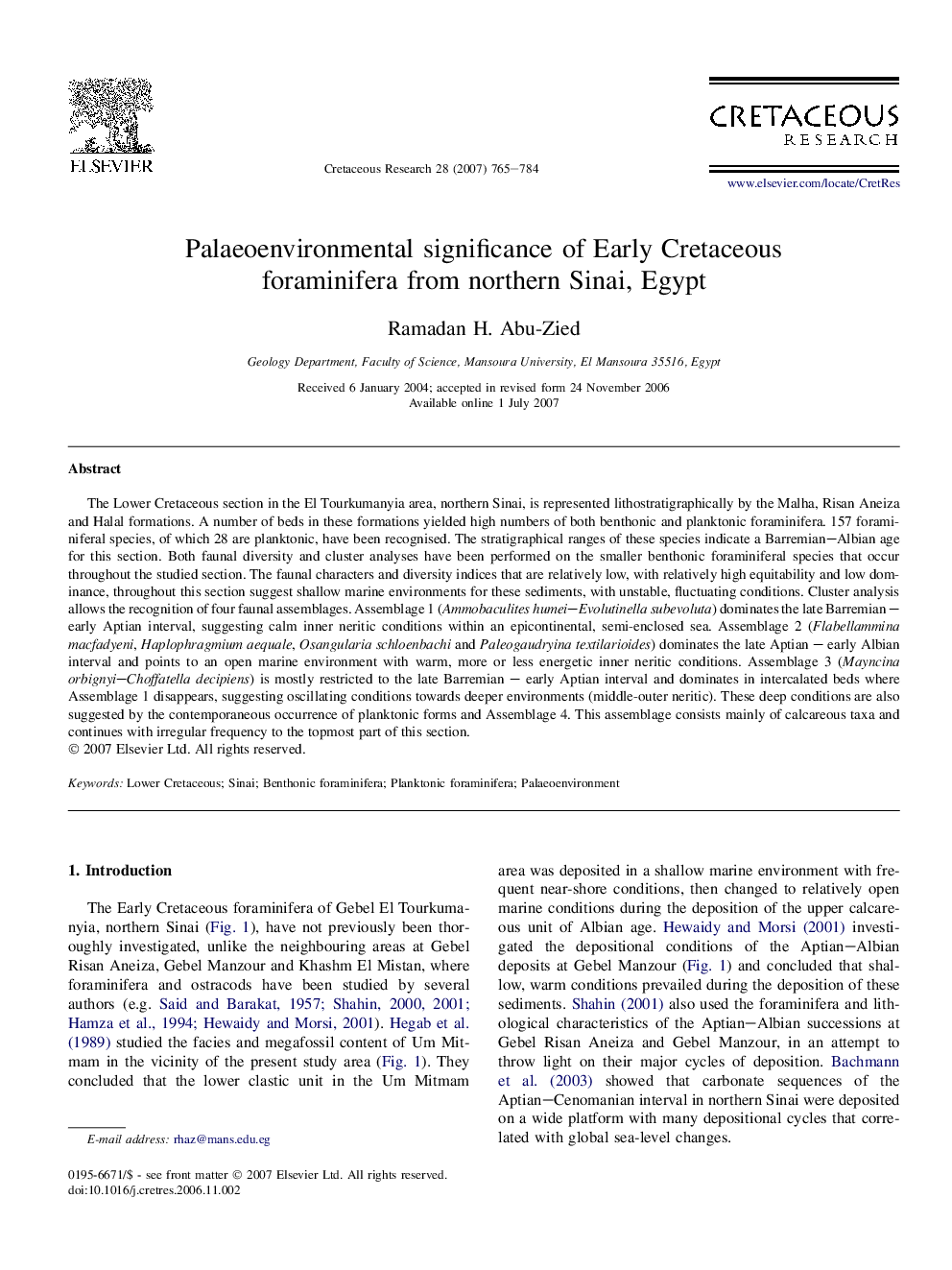| کد مقاله | کد نشریه | سال انتشار | مقاله انگلیسی | نسخه تمام متن |
|---|---|---|---|---|
| 4747251 | 1359899 | 2007 | 20 صفحه PDF | دانلود رایگان |
عنوان انگلیسی مقاله ISI
Palaeoenvironmental significance of Early Cretaceous foraminifera from northern Sinai, Egypt
دانلود مقاله + سفارش ترجمه
دانلود مقاله ISI انگلیسی
رایگان برای ایرانیان
کلمات کلیدی
موضوعات مرتبط
مهندسی و علوم پایه
علوم زمین و سیارات
فسیل شناسی
پیش نمایش صفحه اول مقاله

چکیده انگلیسی
The Lower Cretaceous section in the El Tourkumanyia area, northern Sinai, is represented lithostratigraphically by the Malha, Risan Aneiza and Halal formations. A number of beds in these formations yielded high numbers of both benthonic and planktonic foraminifera. 157 foraminiferal species, of which 28 are planktonic, have been recognised. The stratigraphical ranges of these species indicate a Barremian-Albian age for this section. Both faunal diversity and cluster analyses have been performed on the smaller benthonic foraminiferal species that occur throughout the studied section. The faunal characters and diversity indices that are relatively low, with relatively high equitability and low dominance, throughout this section suggest shallow marine environments for these sediments, with unstable, fluctuating conditions. Cluster analysis allows the recognition of four faunal assemblages. Assemblage 1 (Ammobaculites humei-Evolutinella subevoluta) dominates the late Barremian - early Aptian interval, suggesting calm inner neritic conditions within an epicontinental, semi-enclosed sea. Assemblage 2 (Flabellammina macfadyeni, Haplophragmium aequale, Osangularia schloenbachi and Paleogaudryina textilarioides) dominates the late Aptian - early Albian interval and points to an open marine environment with warm, more or less energetic inner neritic conditions. Assemblage 3 (Mayncina orbignyi-Choffatella decipiens) is mostly restricted to the late Barremian - early Aptian interval and dominates in intercalated beds where Assemblage 1 disappears, suggesting oscillating conditions towards deeper environments (middle-outer neritic). These deep conditions are also suggested by the contemporaneous occurrence of planktonic forms and Assemblage 4. This assemblage consists mainly of calcareous taxa and continues with irregular frequency to the topmost part of this section.
ناشر
Database: Elsevier - ScienceDirect (ساینس دایرکت)
Journal: Cretaceous Research - Volume 28, Issue 5, October 2007, Pages 765-784
Journal: Cretaceous Research - Volume 28, Issue 5, October 2007, Pages 765-784
نویسندگان
Ramadan H. Abu-Zied,